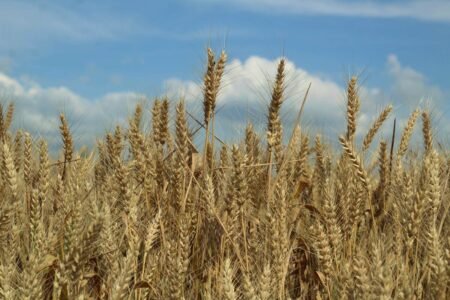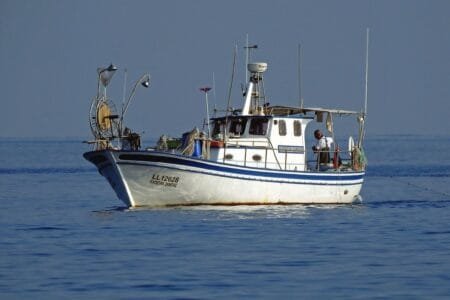Launched nearly four decades ago, in 1979, the Rapid Alert System for Food and Feed (RASFF) is primarily an IT tool designed to swiftly exchange information between national authorities on health risks related to food and feed.
Advertisement
What is the Rapid Alert System for Food and Feed (RASFF)?
A member country of the network that identifies a health hazard informs the rest of the system’s network on the product concerned and the measures taken to address the risk. Measures include: withholding, recalling, seizing or rejecting products. This rapid exchange of information allows all RASFF members to check in real time whether they are also affected and if urgent action is needed. The authorities of affected countries have the responsibility to take the necessary emergency measures, including giving direct information to the public, withdrawing products from the market, and making controls on the ground.
What are the criteria for a member country to send a notification?
Members of RASFF (see below question) must immediately notify the Commission via the system when they have information regarding a serious health risk deriving from food or feed. The specific criteria triggering a notification are set out in the legislation.
Who are the members of RASFF?
– all EU Member States
– EEA countries (Norway, Liechtenstein and Iceland) and the EFTA Secretariat coordinating the input from the EEA countries
– the European Food Safety Authority (EFSA) and
– the European Commission as manager of the system.
– following an agreement that came into force on 1 January 2009, Switzerland is a partial member of the system as far as border rejections of product of animal origin are concerned.
Why do we need RASFF?
RASFF underpins the swift exchange of information among public health authorities on food and feed related risks. This tool enables all RASFF members to take coordinated, coherent and simultaneous actions with the objective to ensure the highest possible level of consumer protection.
How does it work in practice?
All starts with the notification by a member of the RASFF network of the existence of a serious, direct or indirect, risk to public health linked to food or feed. This information reaches the European Commission (as manager of the system), which in turn verifies the notification and immediately transmits it to the other members of the network.
A common template is used to provide all relevant and useful information including identification of the product, hazard(s) found, measure(s) taken and information on tracing the product.
Upon receiving the information, other member countries check if they are concerned. If the product is on their market they are able to trace it using the information in the notification. They report back on what they have found and what measures they have taken for a transparent and mutual information of all RASFF members. In case of products from the EU, the Member State from which the product originates also reports on the outcome of its investigations with regard to the origin, distribution and cause of the problem identified. This allows other member countries to take rapid action if and when needed.
In addition, following a notification by a member of RASFF, the system allows member countries to request clarification as regards the timing, scope or nature of notification. For instance when there is evidence that an incident could have been reported earlier, it is possible to ask the notifying country for an explanation.
What is predominantly notified in RASFF?
Around half of the notifications concern controls at the outer EEA borders, at points of entry or border inspection posts when a consignment was not accepted for import (marked as “border control consignment detained”) or when a sample was taken for analysis at the border (marked as “screening”) and the consignment was released (marked as “border control – consignment released”).
Official controls on the internal market come next.
Finally, other notifications can arise from a consumer complaint, a company notifying the outcome of a check it carried out on its own account, or a food poisoning incident.
What action can the Commission take if a Member State of the EU fails to notify in a timely manner?
If a EU Member State does not notify in a timely manner, the Commission may launch an infringement procedure against that Member State for failure to comply with its obligations under EU law.
Who has what powers to take action when a problem is detected?
When a problem is detected, it is the task of the national food and feed authorities to take action. This includes any action necessary to immediately address the risk but also to prevent a similar risk reoccurring. A whole range of actions are carried out and reported back through RASFF: withdrawal or recall of the products and their possible destruction, information to the public, re-dispatch to origin etc. If there is a need for emergency (safeguard) measures at EU level, the Commission and EU Member States can decide on these measures using a rapid procedure. Such measures are binding with immediate effect.
What happens if a food safety issue reported through RASFF is a result of fraud?
The EU Food Fraud Network (FFN) can be mobilised to allow for swift and efficient cooperation in cases of cross-border violations of the legislation. Created in July 2013 following the horse meat scandal, the FFN is comprised of the EU Member States’ national food fraud contact points and of Iceland, Norway, Switzerland, and the European Commission’s Directorate-General for Health and Food Safety.
It handles potential food fraud cases whether arising from a RASFF notification or following official controls in a RASFF member where there is an indication that a possible violation of food law requirements might be taking place, which are motivated by the prospect of economic or financial gain. The national contact points of the FFN and the European Commission are in permanent contact.
Since August 2016 an IT tool supports the FFN by giving member countries the means to rapidly confirm a suspicion of fraud. Thanks to this tool, authorities in charge may liaise bilaterally (or multilaterally) to get information in order to build a case for action leading potentially to administrative sanctions or judicial proceedings.
What is the difference between RASFF and the Food Fraud Network?
RASFF is a key tool to ensure the cross-border flow of information to swiftly react when risks to public health are detected in the food chain, whereas the Food Fraud Network (FFN), facilitated by the Administrative Assistance and Cooperation (AAC) IT tool allows member countries to liaise bilaterally (or multilaterally) to rapidly confirm a suspicion of fraud.
Under RASFF, the Commission’s has a role to verify the RASFF notifications and inform third countries, whereas the Food Fraud Network is primarily a means for member countries to exchange information to help them build a case for action leading potentially to administrative sanctions or judicial proceedings.
As regards the FFN, in normal cases the Commission does not intervene in bilateral exchanges of information through AAC. Its role is more to facilitate the use of the IT tool through helpdesk, training, ensuring diligent responses from member countries and proper closing when case brought to an end, notably with regard to personal data protection aspects. It should also be noted that cases of fraud are much more difficult to assess, and a variety of obstacles could lead to a longer time frame for members’ response.
What is iRASFF?
iRASFF is the new online application through which all 32 RASFF member countries can transmit new notifications about products presenting a risk or provide follow-up to previously transmitted notifications by other members. It functions like an online interactive platform and has a specific workflow to allow members of the network to collaborate on the notifications in a transparent way. It is designed to function both at national and EU level. Another benefit is that it links RASFF notifications to other systems such as the Trade and Control System (TRACES) and the food fraud IT system more efficiently.
What is the RASFF consumers’ portal and what does it do?
Launched on 13 June 2014, the RASFF consumers’ portal provides practical and timely information drawn from the RASFF on consumer recall notices and public warnings issued by food safety authorities and business operators. It supplements information made public on the RASFF notifications which is actually only a small portion of the information transmitted in the network.







